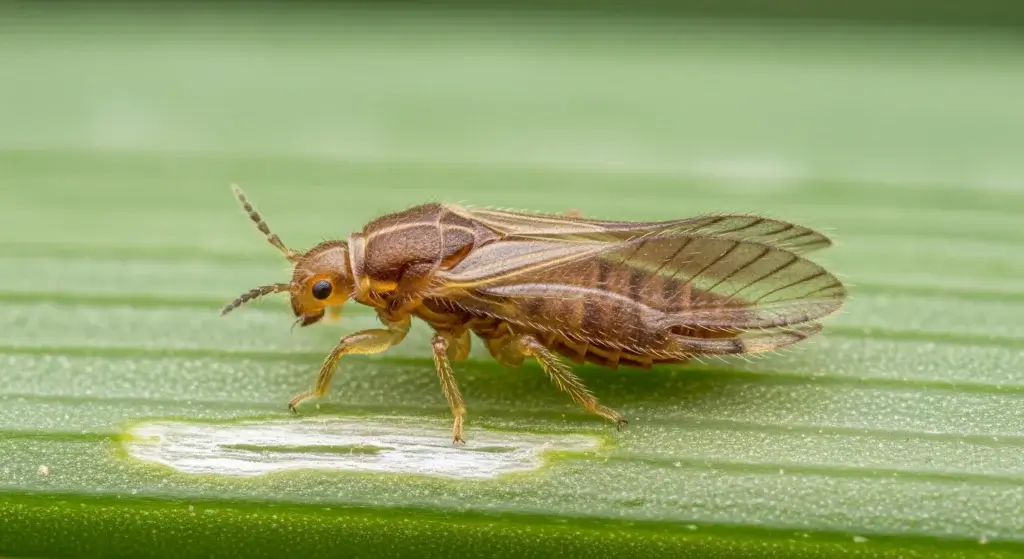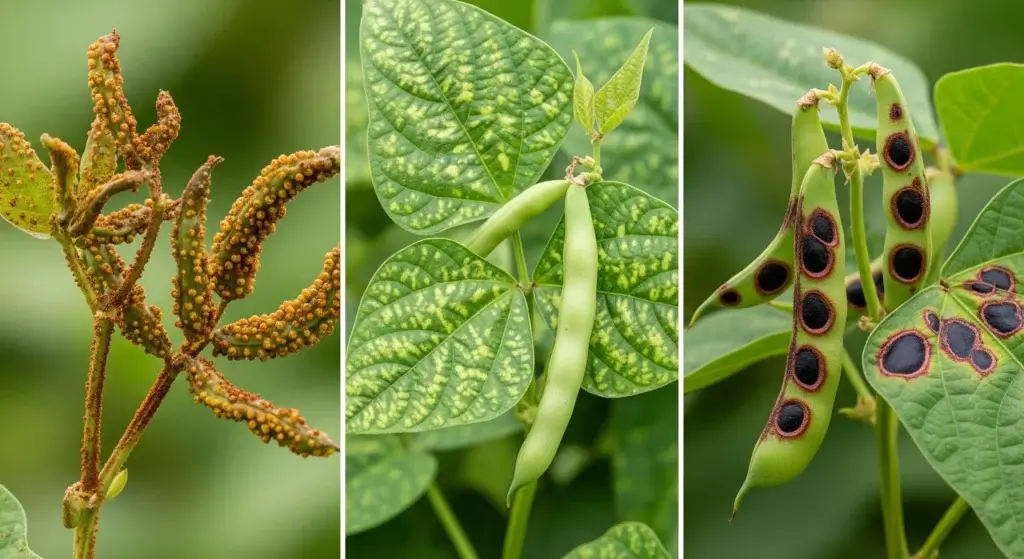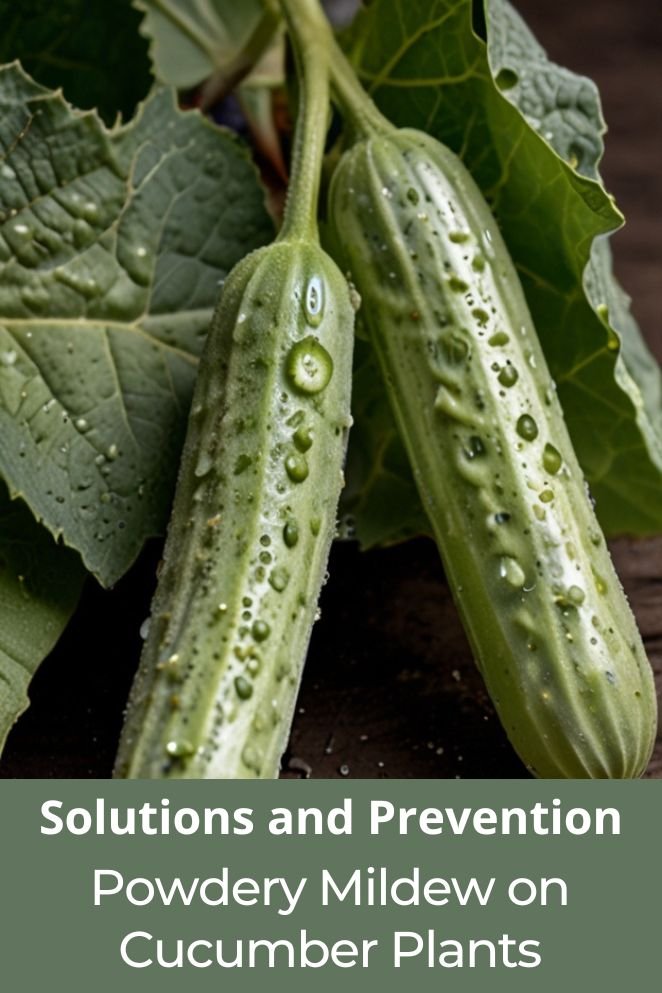
Powdery mildew is a common fungal disease that affects cucumber plants, causing significant damage and reducing yields.
As a gardener, it is crucial to understand the signs, causes, and prevention methods to ensure a healthy and productive cucumber crop.
In this article, we will explore the impact of powdery mildew on cucumber plants, its signs, causes, and how to prevent and treat it.
Powdery Mildew Impacts on Cucumber Plants
Powdery mildew weakens cucumber plants in several ways, reducing their overall health and productivity.
Here’s a table summarizing the negative effects:
| Impact | Description |
| Reduced photosynthesis |
Powdery mildew forms a white powdery coating on leaves, which blocks sunlight. This reduces the plant’s ability to produce food (glucose) through photosynthesis.
|
| Stunted growth |
Due to reduced photosynthesis, powdery mildew can stunt the growth of cucumber plants.
|
| Lower yield |
A weakened plant produces fewer cucumbers.
|
| Deformed or discolored fruits |
Powdery mildew infection on fruits can cause them to become deformed or discolored, making them unmarketable.
|
| Increased susceptibility to other diseases |
Powdery mildew weakens the plant’s defenses, making it more susceptible to other diseases.
|
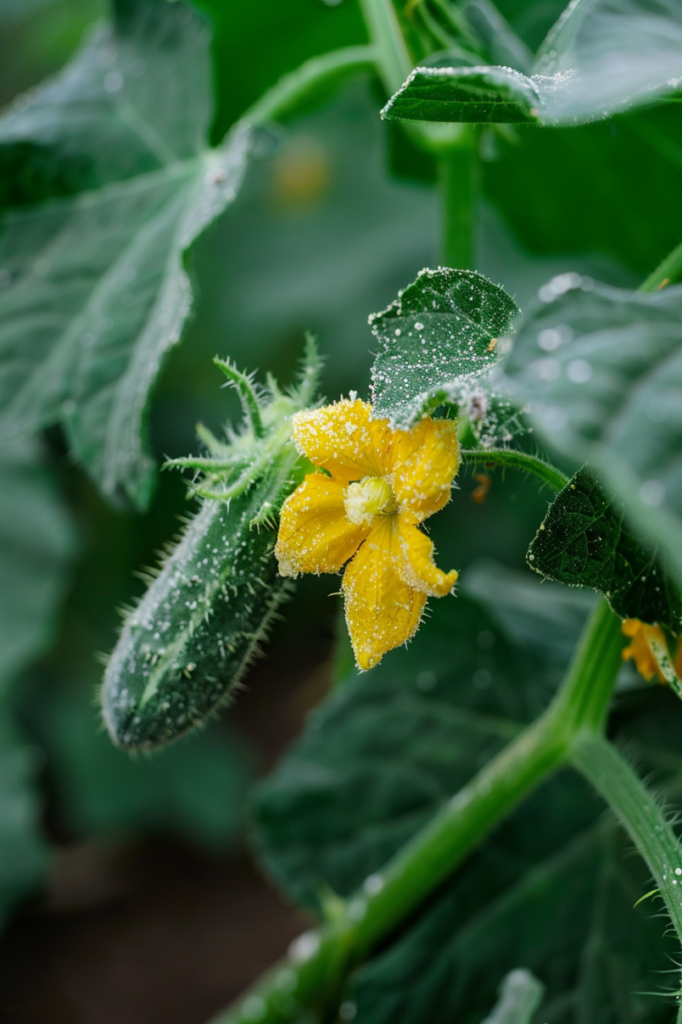
Signs of Powdery Mildew on Cucumber Plants
When it comes to spotting powdery mildew on your cucumber plants, it’s essential to know what signs to look for.
Here’s a breakdown of the key indicators:
White, powdery growth
One of the most apparent signs of powdery mildew is the presence of a white, powdery substance on the leaves and stems of your cucumber plants.
This powdery growth is actually a fungal infection caused by airborne spores. It typically starts as small white spots and can quickly spread, covering large areas of the plant if left untreated.
- Read also: A Complete Guide: Troubleshooting Common Cucumber Problems
- Read also: Beat the Bugs: A Guide to Controlling Cucumber Beetles
Discolored leaves
As the powdery mildew infection progresses, you may notice discoloration and distortion of the cucumber leaves.
Affected leaves may turn yellow, brown, or even purple in severe cases.
Additionally, the leaves may become twisted or wrinkled, detracting from the plant’s overall appearance.
Stunted growth
Powdery mildew can have a detrimental effect on the growth and vigor of cucumber plants.
Infected plants may exhibit stunted growth, with shorter stems and fewer leaves than healthy plants.
This stunting can significantly reduce the yield of your cucumber crop and impact overall plant health.
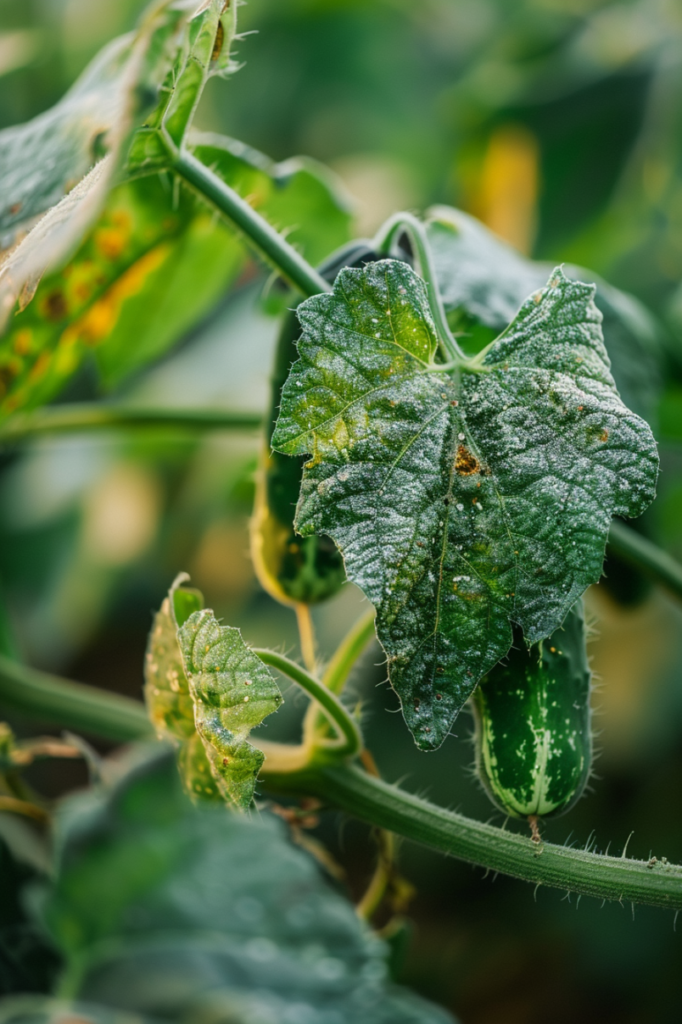
Causes of Powdery Mildew
Powdery mildew on cucumber plants is caused by a fungal invasion, but several factors contribute to the fungus establishing itself and thriving.
Here’s a breakdown of the key causes:
Fungal spores
Powdery mildew spreads through microscopic airborne spores.
These spores can easily travel long distances on wind currents and land on your cucumber plants.
Brushing against infected plants or contaminated tools can also transfer spores.
Favorable environment
The fungal spores germinate and infect cucumber plants under specific environmental conditions.
Warm temperatures (around 68-81°F) with high humidity create the perfect breeding ground.
Poor air circulation around plants also traps moisture and spores, increasing the risk of infection.
Weak plants
Cucumber plants that are stressed or unhealthy are more susceptible to powdery mildew. This can be due to various factors such as:
- Excessive nitrogen fertilizer: Too much nitrogen fertilizer promotes lush foliage growth but weakens plant cell walls, making them easier for the fungus to penetrate.
- Overcrowding: Plants crammed together create poor air circulation and prevent leaves from drying properly, providing a favorable environment for the fungus.
- Improper watering: Frequent overhead watering keeps leaves wet for extended periods, encouraging fungal growth. Watering at the base of the plant helps prevent this.

How to Prevent Powdery Mildew
To prevent powdery mildew on cucumber plants, follow these cultural practices:
Provide good air circulation
Proper airflow is essential for preventing the spread of powdery mildew.
Plant cucumber vines with adequate spacing between them to allow air to circulate freely.
Avoid crowding plants or placing them in areas with limited ventilation, as this creates favorable conditions for fungal growth.
Maintain proper humidity
Powdery mildew thrives in humid environments, so it’s crucial to keep humidity levels in check around your cucumber plants.
Avoid overwatering, as excess moisture on the leaves can create a breeding ground for fungal spores.
Consider using drip irrigation or soaker hoses to water the soil directly and minimize leaf wetness.
Water plants properly
When watering cucumber plants, aim to keep the foliage dry.
Water the soil at the base of the plants early in the day to allow excess moisture to evaporate before evening.
Avoid overhead watering, as splashing water can spread fungal spores from infected plants to healthy ones.
Remove infected leaves
Regularly inspect your cucumber plants for signs of powdery mildew, such as white powdery growth on the leaves and stems.
If you spot any infected leaves, promptly remove them to prevent the disease from spreading.
Dispose of infected plant material away from your garden to minimize the risk of reinfection.
Organic options for powdery mildew control
In addition to cultural practices, organic options are available to prevent and treat powdery mildew on cucumber plants.
These natural remedies offer effective alternatives to chemical fungicides:
Neem oil
Neem oil is a natural fungicide derived from the neem tree and is known for its antifungal properties.
Dilute neem oil according to the manufacturer’s instructions and apply it to cucumber plants to prevent and treat powdery mildew.
Neem oil works by disrupting the fungal cell membranes, inhibiting their growth and reproduction.
Copper-based fungicides
Copper-based fungicides, such as copper sulfate or copper hydroxide, are effective against powdery mildew and can be used as a last resort if other methods fail.
Copper ions disrupt fungal enzymes and proteins, leading to their demise.
However, use copper-based fungicides sparingly, as excessive use can harm beneficial organisms in the soil.
Baking soda
Baking soda is a readily available and inexpensive natural fungicide that can help prevent and treat powdery mildew on cucumber plants.
Mix one tablespoon of baking soda with one gallon of water and add a few drops of liquid soap to create a spray solution.
Apply the mixture to cucumber plants every one to two weeks to inhibit fungal growth and protect against powdery mildew.
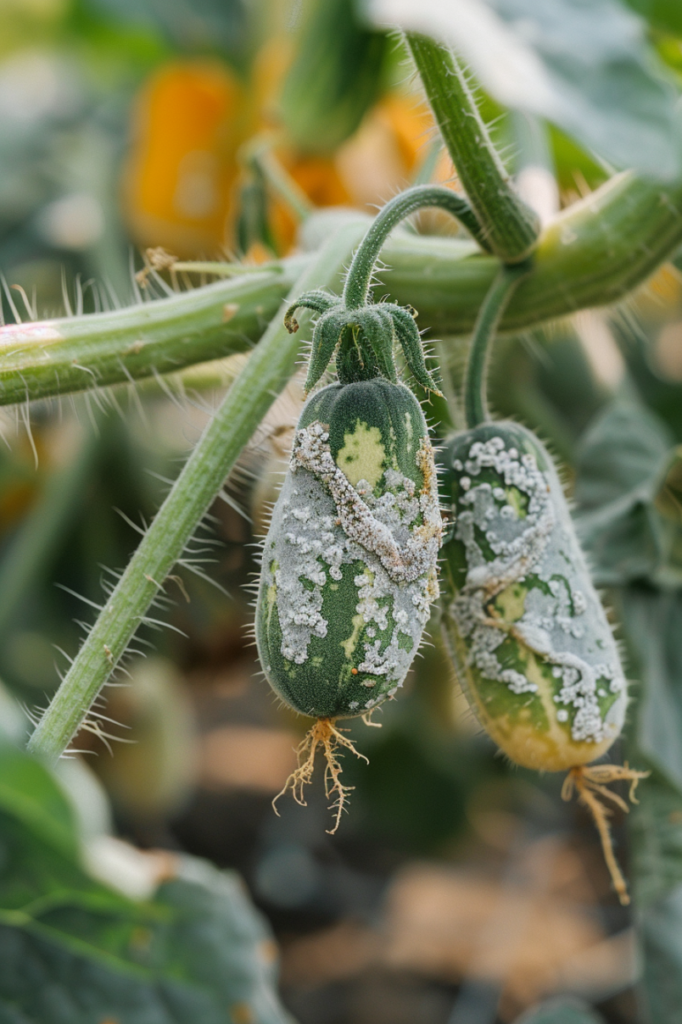
How to Treat Powdery Mildew
When powdery mildew strikes your cucumber plants, swift action is essential to prevent the disease from spreading and causing further damage.
Here’s how to effectively treat powdery mildew and restore the health of your cucumber crop:
Fungicides
Fungicides are chemical formulations specifically designed to combat fungal diseases like powdery mildew.
They work by inhibiting fungal growth and preventing spore production.
Select a fungicide labeled for use against powdery mildew on cucumbers and follow the manufacturer’s instructions carefully when applying.
Be sure to cover all affected plant parts thoroughly for maximum effectiveness.
Organic treatments
For those preferring natural alternatives, organic treatments offer effective options for combating powdery mildew on cucumber plants.
Neem oil, derived from the neem tree, possesses natural antifungal properties and can be diluted and applied to affected plants.
Baking soda, when mixed with water and a small amount of liquid soap, creates a spray solution that disrupts fungal growth.
Apply organic treatments regularly to infected plants, ensuring thorough coverage of all affected areas.
Remove infected leaves
To prevent the spread of powdery mildew, promptly remove infected leaves from cucumber plants.
Use sanitized pruning shears or scissors to cut away affected foliage, making clean cuts to minimize damage to the plant.
Dispose of removed leaves away from your garden to prevent fungal spores from spreading to healthy plants.
Regularly inspect your cucumber plants for new signs of infection and continue removing infected leaves as needed.
Importance of Early Intervention
Early intervention is critical when dealing with powdery mildew on cucumber plants.
Acting promptly at the first sign of infection can prevent the disease from spreading and causing significant damage to your crop.
By promptly implementing treatment measures, you can minimize the impact of powdery mildew and protect the health and productivity of your cucumber plants.
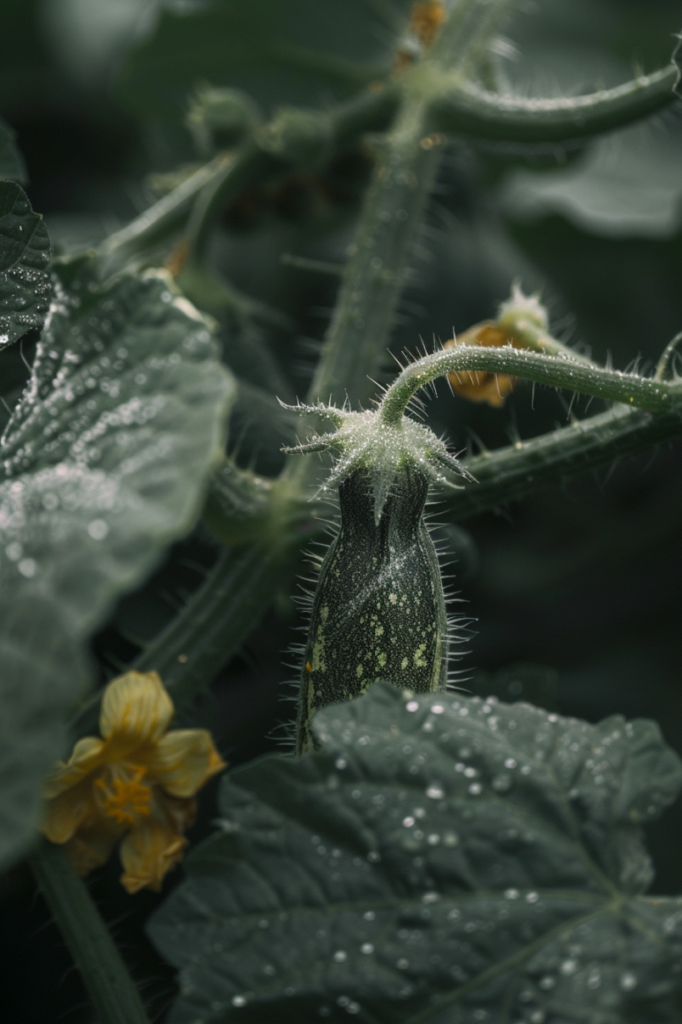
- Read also: Pest Damage on Vegetables: A Guide to Identification and Control
- Read also: The Pesticide Paradox: The Impact of Pesticides on Vegetable
Conclusion
Powdery mildew is a common fungal disease that affects cucumber plants, causing significant damage and reducing yields.
To prevent and treat powdery mildew, follow cultural practices such as providing good air circulation, maintaining proper humidity, and removing infected leaves.
Additionally, use organic options such as neem oil and baking soda to prevent and treat the disease.
Early intervention is crucial in preventing and treating powdery mildew, so act quickly if you suspect your cucumber plants are infected.

